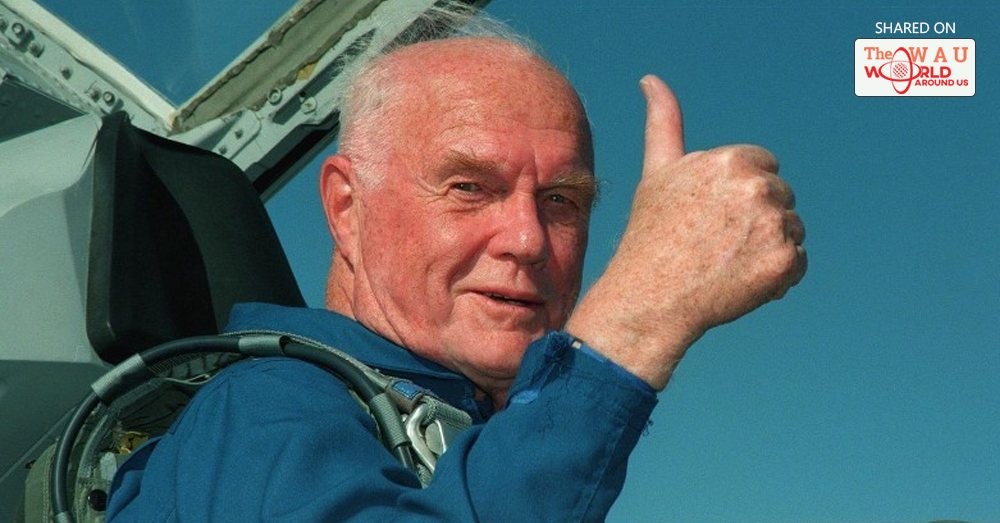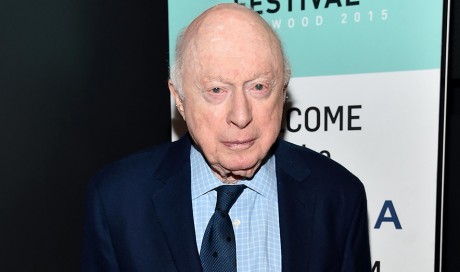Glenn had two major career paths that often intersected—flying and politics, and he soared in both of them.
John Glenn, whose 1962 flight as the first U.S. astronaut to orbit the Earth made him an all-American hero and propelled him to a long career in the U.S. Senate, died on Thursday. The last survivor of the original Mercury 7 astronauts was 95.
Glenn died at the James Cancer Hospital in Columbus, Ohio, where he was hospitalised for more than a week, said Hank Wilson, communications director for the John Glenn School of Public Affairs.
An American space hero
John Herschel Glenn Jr. had two major career paths that often intersected—flying and politics, and he soared in both of them.
Before he gained fame orbiting the world, he was a fighter pilot in two wars, and as a test pilot, he set a transcontinental speed record. He later served 24 years in the Senate from Ohio. A rare setback was a failed 1984 run for the Democratic presidential nomination.
More than anything, Glenn was the ultimate and uniquely American space hero—a combat veteran with an easy smile, a strong marriage of 70 years and nerves of steel. Schools, a space center and the Columbus airport were named after him. So were children.
The Soviet Union leaped ahead in space exploration by putting the Sputnik 1 satellite in orbit in 1957, and then launched the first man in space, cosmonaut Yuri Gagarin, in a 108-minute orbital flight on April 12, 1961. After two suborbital flights by Alan Shepard Jr. and Gus Grissom, it was up to Glenn to be the first American to orbit the Earth.
“Godspeed, John Glenn,” fellow astronaut Scott Carpenter radioed just before Glenn thundered off a Cape Canaveral launch pad, now a National Historic Landmark, to a place America had never been. At the time of that Feb. 20, 1962, flight, Glenn was 40 years old.
During the four-hour, 55-minute flight, Glenn uttered a phrase that he would repeat frequently throughout life—“Zero G, and I feel fine.”
“It still seems so vivid to me,” Glenn said in a 2012 interview with The Associated Press on the 50th anniversary of the flight. “I still can sort of pseudo feel some of those same sensations I had back in those days during launch and all.”
Glenn’s ride in the cramped Friendship 7 capsule had its scary moments. Sensors showed his heat shield was loose after three orbits, and Mission Control worried he might burn up during re-entry when temperatures reached 3,000 degrees. But the heat shield held.
A lifelong love of flight
Glenn was born July 18, 1921, in Cambridge, Ohio, and grew up in New Concord, Ohio. His love of flight was lifelong; John Glenn Sr. spoke of the many summer evenings he arrived home to find his son running around the yard with outstretched arms, pretending he was piloting a plane.
Glenn’s goal of becoming a commercial pilot was changed by World War II. He left Muskingum College to join the Naval Air Corps and soon after, the Marines.
Glenn’s public life began when he broke the transcontinental airspeed record, bursting from Los Angeles to New York City in three hours, 23 minutes and eight seconds. With his Crusader averaging 725 mph, the 1957 flight proved the jet could endure stress when pushed to maximum speeds over long distances.
In New York, he got a hero’s welcome his first tickertape parade. He got another after his flight on Friendship 7.
For the next four years, Glenn devoted his attention to business and investments that made him a multimillionaire. In 1974, Glenn ran for the Senate again and won.
Glenn represented Ohio in the Senate longer than any other senator in the state’s history. He became an expert on nuclear weaponry and was the Senate’s most dogged advocate of nonproliferation. He was the leading supporter of the B-1 bomber when many in Congress doubted the need for it.
Glenn said the lowest point of his life was 1990, when he and four other senators came under scrutiny for their connections to Charles Keating, the notorious financier who eventually served prison time for his role in the costly savings and loan failure of the 1980s. The Senate Ethics Committee cleared Glenn of serious wrongdoing but said he “exercised poor judgment.”
Glenn returned to space in a long-awaited second flight in 1998 aboard the space shuttle Discovery. He got to move around aboard the shuttle for far longer nine days, compared with just under five hours in 1962 as well as sleep and experiment with bubbles in weightlessness.
In 1943, Glenn married his childhood sweetheart, Anna Margaret Castor. They had two children, Carolyn and John David.
The couple spent their later years between Washington and Columbus. Both served as trustees at their alma mater, Muskingum College. Glenn spent time promoting the John Glenn School of Public Affairs at Ohio State University, which also houses an archive of his private papers and photographs.
Share This Post















